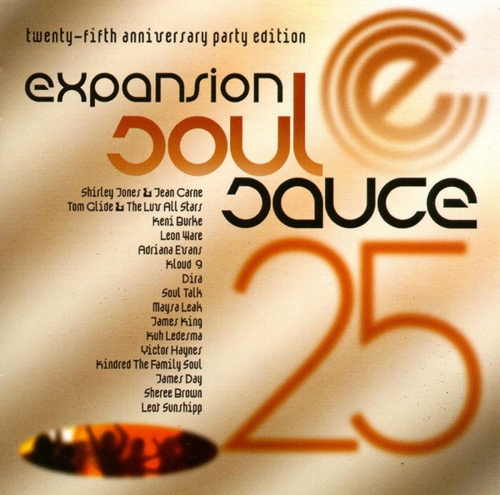Yevgeny Sudbin - Rachmaninov: Variations on a Theme of Chopin, Piano Sonata No. 2 (2005) Hi-Res

Artist: Yevgeny Sudbin
Title: Rachmaninov: Variations on a Theme of Chopin, Piano Sonata No. 2
Year Of Release: 2005
Label: BIS
Genre: Classical
Quality: FLAC 24bit-44.1kHz / FLAC (image+.cue,log,scans)
Total Time: 01:04:45
Total Size: 546 Mb / 218 Mb
WebSite: Album Preview
01. Rachmaninov - Variations on a Theme of Chopin Op.22 - I. Theme¡FVariations 1-10 [0:06:23.05]Title: Rachmaninov: Variations on a Theme of Chopin, Piano Sonata No. 2
Year Of Release: 2005
Label: BIS
Genre: Classical
Quality: FLAC 24bit-44.1kHz / FLAC (image+.cue,log,scans)
Total Time: 01:04:45
Total Size: 546 Mb / 218 Mb
WebSite: Album Preview
02. Rachmaninov - Variations on a Theme of Chopin Op.22 - II. Variations 11, 13-18 [0:09:36.24]
03. Rachmaninov - Variations on a Theme of Chopin Op.22 - III. Variations 19-22 [0:10:04.15]
04. Rachmaninov - Song Transcriptions - Lilacs (Siren), Op.21 No.5 [0:02:34.40]
05. Rachmaninov - Song Transcriptions - Daisies (Margaritki), Op.38 No.3 [0:02:20.34]
06. Rachmaninov - Piano Sonata No.2 Op.36 - I. Allegro agitato [0:09:13.03]
07. Rachmaninov - Piano Sonata No.2 Op.36 - II. Non allegro - Lento [0:05:53.29]
08. Rachmaninov - Piano Sonata No.2 Op.36 - III. L'istesso tempo - Allegro molto [0:06:03.13]
09. Fritz Kreisler - Liebesleid [0:04:39.64]
10. Fritz Kreisler - Liebesfreud [0:07:13.13]
Performers:
Yevgeny Sudbin, piano
Yevgeny Sudbin's inquiring mind, unflappable fingers, and huge heart mesh with extraordinary concentration and intensity, resulting in some of the most carefully thought-through, powerfully projected, and fastidiously executed Rachmaninov interpretations I've ever heard. A few general comments equally pertain to all of the selections.
In Sudbin's hands, inner voices aren't gently coaxed from the massive, orchestrally inspired textures for ear-catching effect, but instead emerge as integral and active components. He balances and calibrates chords to unsplintered perfection, regardless of dynamic level, thickness, or tempo. Sudbin's command of Rachmaninov's trademark swirling leggiero passages recalls the composer's own bedrock solidity at the keyboard and also replicates Alexis Weissenberg's icy brilliance, but with more tonal heft.
While Sudbin offers plenty of nuances and felicitous differentiation of textural levels, he contains them within a strong architectural game plan, where he weaves transitions and tempo relationships between variations into a unified dramatic and cumulative whole that minimizes the music's tendencies to sprawl. The same holds true for the Second sonata, where Sudbin essentially follows Horowitz's well-balanced synthesis of the composer's original 1913 text and much pared down 1931 revision.
In the two Kreisler transcriptions and piano versions of two songs, Sudbin uncovers layers of linear sophistication that other pianists barely scratch, and without the slightest sense of contrivance or lack of surface charm.
Sudbin's superb booklet notes give clear, insightful analyses of the works in hand and explain his harmonic and textual rationale for changing the Chopin C minor Prelude theme statement's E-natural on the fourth beat of measure 3 to E-flat. Either in surround-sound or conventional stereo playback, the sonics are gorgeous. When this release achieves classic status among the reference Rachmaninov recital collections, remember that you read it here first! A winner, not to be missed. -- Jed Distler
In Sudbin's hands, inner voices aren't gently coaxed from the massive, orchestrally inspired textures for ear-catching effect, but instead emerge as integral and active components. He balances and calibrates chords to unsplintered perfection, regardless of dynamic level, thickness, or tempo. Sudbin's command of Rachmaninov's trademark swirling leggiero passages recalls the composer's own bedrock solidity at the keyboard and also replicates Alexis Weissenberg's icy brilliance, but with more tonal heft.
While Sudbin offers plenty of nuances and felicitous differentiation of textural levels, he contains them within a strong architectural game plan, where he weaves transitions and tempo relationships between variations into a unified dramatic and cumulative whole that minimizes the music's tendencies to sprawl. The same holds true for the Second sonata, where Sudbin essentially follows Horowitz's well-balanced synthesis of the composer's original 1913 text and much pared down 1931 revision.
In the two Kreisler transcriptions and piano versions of two songs, Sudbin uncovers layers of linear sophistication that other pianists barely scratch, and without the slightest sense of contrivance or lack of surface charm.
Sudbin's superb booklet notes give clear, insightful analyses of the works in hand and explain his harmonic and textual rationale for changing the Chopin C minor Prelude theme statement's E-natural on the fourth beat of measure 3 to E-flat. Either in surround-sound or conventional stereo playback, the sonics are gorgeous. When this release achieves classic status among the reference Rachmaninov recital collections, remember that you read it here first! A winner, not to be missed. -- Jed Distler



![Barre Phillips - Three Day Moon (1978/2025) [Hi-Res] Barre Phillips - Three Day Moon (1978/2025) [Hi-Res]](https://www.dibpic.com/uploads/posts/2025-12/1766322384_cover.jpg)


![Black Flower - Abyssinia Afterlife (2014) [Hi-Res] Black Flower - Abyssinia Afterlife (2014) [Hi-Res]](https://img.israbox.com/img/2025-12/21/anj3jk2va3pc3i9y3pv0m7zde.jpg)

